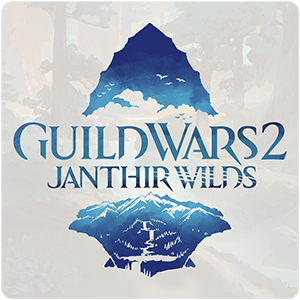Surprisingly, I think I disagree with most of what you’ve said in this comment.
While I understand that it can be discouraging for a creator to have the species and cultures that they have worked on not really be explored by the majority of players I don’t think it is an issue most of the time.
It also seems a bit odd to me to lump elf, half-elf, and presumably also dwarves in with humans, given that they usually make for the hard core of fantasy races. If those aren’t considered distinct then I’d wager that maybe the issue isn’t that they are less distinct and cool compared to other races but something else. Either that races that are seen as “distinct” actually lean into some sort of “gimmick”, or that people simply pick what they think looks good, and they aren’t into how Gith look, for example.
While I know there is a large group of people playing Human mainly, I feel like that reflects the fantasy that is being set up by most games that I have engaged with. Humans are the “standard” and other races are exotic, deeply different, and usually rare. At least that’s what seems to me like the most common fantasy setting type (and also my preference). That’s why I don’t mind when the majority plays humans, as that does reflect the story of the game. It seems more odd to me when the party strolls into town and they have a tiefling, drow, aasimar, and lizardfolk. When all those races are stated to be unique, strange, and alien to most people and those players don’t really get a chance to shine with their “weirdness” in the party because there is no baseline that they can compare themselves against. After all: when everyone is super, nobody is.
The only time I can recall this creating a ludo-narrative dissonance is in Guild Wars 2, where humanity is supposed to be a dying (alien) race with few members left. By all accounts the people of the land should be a majority of charr (cat-people, basically). But of course, the “human female meta” as it is called (meaning people playing conventionally attractive human, female characters with “the sexy outfit”) is greater, and as it turns out most people are playing humans. The result being that what you see when walking around is mostly humans when it “should” be mostly charr. A lot of people just play characters they think “look good”.
As for why people are playing humans. I think there is a reason that you haven’t touched on. I, for example, will play a human for almost every one of my characters unless I have a good reason not to. This is because I base my characters around a theme or a story and I want the focus on the character to be on that theme or story, and not on their species.
I also don’t think designers make humans boring or bad on purpose to discourage players from playing them. They could just not include humans if that is what they wanted (Plenty of good examples of this. Mousegard and Humblewood for RPGs. Deep Rock Galactic, Dwarf Fortress and a ton others for video games). I think most often it comes down to people not knowing what to do with humans. Most fantasy races tend to be “human but x”, so when you are making a human you don’t really have anything “but”, meaning that you usually end up is a situation of “humans, well, we all know what a human is, don’t we? I can’t see anything special about humans that one of these other races don’t embody in a greater capacity.”. (Side note: I like how GW2 handled this. The 5 races have fairly good and distinct themes. Charr are militaristic, Asura are obsessed with knowledge, Sylvari are young and still figuring out the world, Norn are shapeshifting and spiritualistic, and Humans are devoted to their gods who brought them to this world.)









I have never understood the grease argument. People seem to hold it up as some sort of ideal for creativity and playing outside the written rules, to the point that it has basically become a sort of shibboleth to sort who is a fun person and who isn’t (like in this blog post), but most people I’ve seen know about the combo because they heard about it somewhere, not because they came up with this awesome original idea by themselves.
And, while the grease spell doesn’t say it is flammable, it also makes no sense from a real-world application. Cooking grease at room temperature does not burn. the whole thing is more like the example of the flanking rule that is mentioned in the post. Everyone knows about the “setting fire to grease” thing, so obviously it’s an actual rule.
And as for it’s use as a shibboleth, I must admit that it works in my case. I am indeed, a no fun person. I like having rules to look up and will not allow much “creative” use of spells outside of what is written in them at my table. But, in my defence, I’d say that it is infact the other side, this strawman that I am now constructing, that is in the wrong. I feel like people at this point are basically treating spell slots as “plot tokens”. “Hey, can I do this thing that normally I wouldn’t be able to do? I’m willing to give up a 3rd level
plot tokenspell slot for it.” And there’s nothing wrong with plot tokens, plenty of games use them to great effect. But spell slots aren’t designed to be used like this in 5e, and it shows. It is (I think) one of the reasons why people think martials suck: They don’t have any plot tokens to bargain with. If everyone had them it would be fine (Oh, hello, DnD 4e), but they don’t.No, I think spells should do what they say they do. Playing “outside your sheet” is fine and good, but you have to keep in mind what you are allowing when you do (and allowing creative ideas to be a great boon, but you can’t repeat the same creative idea more than one is a good compromise).